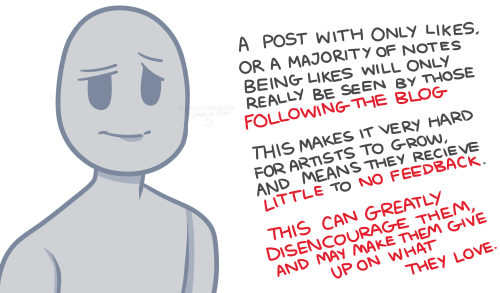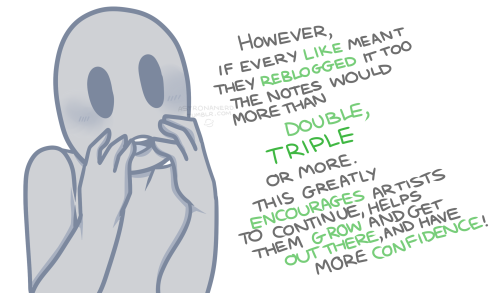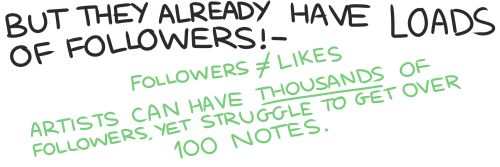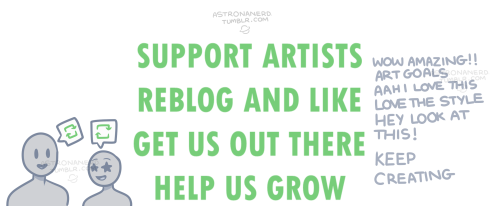The Ants When I Vacuum Their Crumbs
the ants when i vacuum their crumbs
whoever made the decision to make umpires wear cameras... you are a legend


this is genuinely the funniest thing i've ever seen
More Posts from Sleepdeprivedskelton and Others
So y’all know the classic edge trope of “my blade cannot be sheathed until it has tasted blood”? What if a magic sword that has that requirement, except it’s sort of inverted. A sword that, instead of being inhabited by an evil spirit which once awakened cannot be lulled back to sleep except by blood sacrifice, was inhabited by a benevolent spirit who would not allow the sword to be drawn unless bloodshed were the only possible solution. A sword whose power could never be misused because it would only allow itself to be used in situations where it was justified. What about a Paladin who spends their entire journey fighting with a sheathed sword, incapacitating but never killing or maiming. The party believes that the Paladin has taken an oath of no killing, until they face the big villain. And it is in that moment, and that moment alone, that the sword will allow itself to be drawn.
Idk, this image set my mindwheels a-turning.

But do y’all see the vision?
NEED HELP WRITING? (a masterlist)
I have likely not added many that I've reblogged to this list. Please feel free to roam my blog and/or ask/message me to add something you'd like to see on this list!
Synonym Lists
Look by @writers-potion
Descriptors
Voices by @saraswritingtipps
Show, Don't Tell by @lyralit
Tips & Tricks
5 Tips for Creating Intimidating Antagonists by @writingwithfolklore
How To (Realistically) Make a Habit of Writing by @byoldervine
Let's Talk About Misdirection by @deception-united
Tips to Improve Character Voice by @tanaor
Stephen King's Top 20 Rules for Writers posted by @toocoolformedschool
Fun Things to Add to a Fight Scene (Hand to Hand Edition) by @illarian-rambling
Questions I Ask My Beta Readers by @burntoutdaydreamer
Skip Google for Research by @s-n-arly
Breaking Writing Rules Right: Don't Write Direct Dialogue by @septemberercfawkes
Databases/Resources
International Clothing
Advice/Uplifting
Too Ashamed of Writing To Write by @writingquestionsanswered
"Said" is Beautiful by @blue-eyed-author
How to Write Strong Dialogue
(from a writer of ten years)
So you’re back in the writing trenches. You’re staring at your computer, or your phone, or your tablet, or your journal, and trying not to lose your mind. Because what comes after the first quotation mark? Nothing feels good.
Don’t worry, friend. I’m your friendly tumblr writing guide and I’m here to help you climb out of the pit of writing despair.
I’ve created a character specifically for this exercise. His name is Amos Alejandro III, but for now we’ll just call him Amos. He’s a thirty-something construction worker with a cat who hates him, and he’s just found out he has to go on a quest across the world to save his mother’s diner.
1.) Consider the Attitude and Characteristics of Your Character
One of the biggest struggles writers face when writing dialogue is keeping characters’ dialogue “in-character”.
You’re probably thinking, “but Sparrow, I’m the creator! None of the dialogue I write can be out of character because they’re my original characters!”
WRONG. (I’m hitting the very loud ‘incorrect’ buzzer in your head right now).
Yes, you created your characters. But you created them with specific characteristics and attitudes. For example, Amos lives alone, doesn’t enjoy talking too much, and isn’t a very scholarly person. So he’s probably not going to say something like “I suggest that we pursue the path of least resistance for this upcoming quest.” He’d most likely say, “I mean, I think the easiest route is pretty self-explanatory.”
Another example is a six-year-old girl saying, “Hi, Mr. Ice Cream Man, do you have chocolate sundaes?” instead of “Hewwo, Ice Cweam Man— Chocowate Sundaes?”
Please don’t put ‘w’s in the middle of your dialogue unless you have a very good and very specific reason. I will cry.
Yes, the girl is young, but she’s not going to talk like that. Most children know how to ask questions correctly, and the ‘w’ sound, while sometimes found in a young child’s speech, does not need to be written out. Children are human.
So, consider the attitude, characteristics, and age of your character when writing dialogue!
2.) Break Up Dialogue Length
If I’m reading a novel and I see an entire page of dialogue without any breaks, I’m sobbing. You’re not a 17th century author with endless punctuation. You’re in the 21st century and people don’t read in the same way they used to.
Break up your dialogue. Use long sentences. Use one word. Use commas, use paragraph breaks. Show a character throwing a chair out a window in between sentences.
For example:
“So, you’re telling me the only way to save my Ma’s diner is to travel across five different continents, find the only remaining secret receipt card, and bring it back before she goes out of business? She didn’t have any other copies? Do I have to leave my cat behind?”
vs.
Amos ran a hand over his face. “So, you’re telling me the only way to save my Ma’s diner is to travel across five different continents, find the only remaining secret recipe card, and bring it back before she goes out of business?”
He couldn’t believe his luck. That was sarcastic, of course. This was ironically horrible.
“She didn’t have any other copies?” He leaned forward over the table and frowned. “Do I have to leave my cat behind?”
The second version is easier to digest, and I got to add some fun description of thought and action into the scene! Readers get a taste of Amos’ character in the second scene, whereas in the first scene they only got what felt like a million words of dialogue.
3.) Don’t Overuse Dialogue Tags.
DON’T OVERUSE DIALOGUE TAGS. DON’T. DON’T DON’T DON’T.
If you don’t know what a dialogue tag is, it’s a word after a sentence of dialogue that attributes that dialogue to a specific character.
For example:
“Orange juice and chicken ramen are good,” he said.
‘Said’ functions as the dialogue tag in this sentence.
Dialogue tags are good. You don’t want to completely avoid them. (I used to pride myself on how I could write stories without any dialogue tags. Don’t do that.) Readers need to know who’s speaking. But overusing them, or overusing weird or unique tags, should be avoided.
Examples:
“I’m gonna have to close my diner,” Amos’ mother said.
“Why?” Amos growled. “It’s been in the family forever.”
“I’ve lost the secret recipe card, and I can’t keep the diner open without it!” she cried.
“The Bacon Burger Extreme recipe card?” Amos questioned.
“Yes!” Amos’ mother screamed.
“Well, that’s not good,” Amos complained.
vs.
“I’m gonna have to close my diner,” Amos’ mother said, taking her son’s hand and leading him over to one of the old, grease-stained tabletops with the ripped-fabric booths.
Amos simply stared at her as they moved. “Why? It’s been in the family forever.”
“I’ve—” she looked away for a moment, then took in a breath. “I’ve lost the secret recipe card. And I can’t keep the diner open without it.”
“The Bacon Burger Extreme recipe card?”
“Yes!” She still wouldn’t meet his eyes, and her shoulders were shaking. “Yes.”
Amos sat down heavily in the booth. “Well, that’s not good.”
The first scene only gives character names and dialogue tags. There are no actions and no descriptions. The second scene, however, gives these things. It gives the reader descriptions of the diner, the characters’ actions, and attitudes. Overusing dialogue tags gets boring fast, so add interest into your writing!
So! When you’re writing, consider the attitude of your character, vary dialogue length, and don’t overuse dialogue tags.
Now climb out of the pit of writing despair. Pick up your pen or computer. And write some good dialogue!
Best,
Sparrow






Eldritch Miku omgggg
When writing emotionally reserved characters:
Show your character's struggles with holding in emotions. Just because your character won't let themself go in public, doesn't mean they don't struggle holding everything in.
Find a motive. Pride and/or consideration for those around them can make emotionally reserved people hold back more than would be considered good for them. There are other reasons too, perhaps the initial cause and the reason now are different, but try to give them a reason.
Show side-effects. Everything you bottled up shows itself in another way, whether it's physical or mental. This can be long- and short-term, depending on the severity of the emotions.
Give them coping mechanisms. Everyone who wishes not to show certain emotions has a trick or two to keep themselves in check. Taking a sip of water, not looking people in the eyes, clenching their fists, breathing just a bit too deeply.
Write subconscious signs that they give off, which close friends or family might pick on. Just because these characters want to keep their emotions to themselves, doesn't mean they don't give off signs. Some manage to keep said signs well hidden from those closest to them, but it's more common for environment to pick up on something at the very least.

I got an ad in my dream. :(







Writing Notes: Realistic Injuries (pt. 3)

Hostile Environments
It’s not uncommon for your characters to find themselves stranded somewhere with less than ideal conditions.
Cold
There are the obvious risks of hypothermia and frostbite.
The time for these to set in can vary drastically with temperature and windchill.
In both cases, warming should be done slowly or risk blistering of the skin and other complications such as shock.
Like burns, frostbite is classified into degrees of severity:
First degree frostbite – Numbness and whitening of skin.
Second degree – Outer layer of skin frozen, blistering likely when warmed.
Third degree – Skin is white or blue and blotchy. Skin and the tissue beneath it is hard and cold.
Heat
Risk of heat exhaustion or heat stroke.
Heat exhaustion is caused by insufficient water and salt intake. It is easy to develop without realising it.
Heat stroke is more severe and often follows untreated heat exhaustion. It is extremely dangerous and can be fatal.
Symptoms of Heat Exhaustion
Headache
Dizziness, faintness
Confusion and irritability
Thirst
Fast and weak pulse and breathing
Clammy skin and cramps
Additional Symptoms of Heatstroke
Hot, dry, flushed skin
Sweating stops altogether
Nausea
Disorientation up to and including hallucinations
Abnormal blood pressure
Elevated temperature
Unconsciousness
Treatment focuses on lowering the body temperature and rehydrating the person as quickly as possible.
Oxygen Deprivation
Apart from the obvious – lack of oxygen is rather bad for you (6-8 minutes for permanent brain damage) – the reason for the lack can have side effects of its own.
For example smoke, chemical or water inhalation can do physical damage to the lungs making breathing difficult even when the person is removed to a safe place.
Exposure to Vacuum
In short, your major problems would be…
Oxygen deprivation
Exposure to extreme cold
Expansion of gases within the body – meaning that holding your breath would be a Big Mistake, but not one you’d live to regret for very long
In a sudden decompression there would also be the risk of decompression sickness (the bends) and of getting hit by flying debris during the decompression itself.
Assuming you survived the initial decompression you’d have about 10 seconds of consciousness to do something about it and about one and a half minutes to live.
Parts of the body exposed would suffer from swelling, frostbite, and interrupted circulation.
Leaky spaceships
50% atmospheric pressure is enough to have people suffering from hypoxia (oxygen deprivation).
15% and you more or less, may as well be in vacuum.
Source: Leia Fee (with additions by Susannah Shepherd) More: Part 1 ⚜ Part 2 ⚜ Word Lists (Sick) (Pain) ⚜ Drunkenness ⚜ Autopsy
Celethon the Ancient
Note recovered from the Library of Tarbrind, following the disappearance of it's author, John Heldefson, Field Scholar.
A great dragon of the ancient world, Celethon has evaded discovery for many decades. Once a close friend of the Tarbrind King, he went into seclusion after the Great Slaughter. Although the details of his current status remain uncertain, I believe that if Celethon were dead, the consequences would be felt across world. According to historical records, Celethon is approximately 750 years old, one of the most powerful and revered of the True Dragons. He holds a unique position of authority among his kin, serving as the closest thing they have to a leader. Before the Great Slaughter, Celethon was instrumental in founding an elite order known as the Dragon Knights, or Dragoons, under the Tarbrind monarchy. The Dragoons bore Celethon's blessing and symbol, acting as an elite force of warriors and diplomats between dragons and humans, and acted as the hand of Celethon wherever he could not reach himself. They represented the alliance of human and dragon-kind. Nearly all of them perished in the Slaughter, and with Celethon's disappearance, the order collapsed. The survivors reformed as the Firewatch, who to this day carry Celethon's symbol, though they now defend against other threats. Despite his rather pervasive role in history, especially up until 150 years ago, mentions of Celethon, especially physical descriptions are surprisingly sparse, and in some texts, even seemingly censored. I am looking into the matter with the help of the Library of Tarbrind, though I believe there is another who may offer some insight. Either way, Celethon was described as a truly massive dragon, nearly 600 feet in length. His scales were purest black, each one coarse and leaf-shaped, measuring about the length of a grown man's arm. His breath, said to be the hottest fire in all the realms, was used to smelt the impervious metal wolfram, discovered by the Church of the Raven within a fallen star. In personality, Celethon was calm, wise, and deliberate. He was slow to anger, but in battle, he was a force of unparalleled power, capable of rending enemies apart with ease. His might was displayed when he single-handedly slew the dragon Celic the Black, who had razed the city of Oscillia, ripping the rebel dragon in half over the burning city. Hope remains that this titan of the ancient world will one day surface again. Searches have been conducted for decades, although they have become far less frequent due to the lack of results. Personally, I believe he still watches from the shadows, protecting the lands he once called his own.
-
 myrinthinks reblogged this · 6 days ago
myrinthinks reblogged this · 6 days ago -
 diligently-metastasizing liked this · 6 days ago
diligently-metastasizing liked this · 6 days ago -
 brisamm1193 liked this · 6 days ago
brisamm1193 liked this · 6 days ago -
 cirrusinside reblogged this · 6 days ago
cirrusinside reblogged this · 6 days ago -
 cirrusinside liked this · 6 days ago
cirrusinside liked this · 6 days ago -
 emersonsfolly liked this · 6 days ago
emersonsfolly liked this · 6 days ago -
 fwtb-now reblogged this · 6 days ago
fwtb-now reblogged this · 6 days ago -
 mysticspeedforce reblogged this · 6 days ago
mysticspeedforce reblogged this · 6 days ago -
 princesse-timide reblogged this · 6 days ago
princesse-timide reblogged this · 6 days ago -
 krileofficial liked this · 6 days ago
krileofficial liked this · 6 days ago -
 erevas reblogged this · 6 days ago
erevas reblogged this · 6 days ago -
 erevas liked this · 6 days ago
erevas liked this · 6 days ago -
 mynameisdotty reblogged this · 6 days ago
mynameisdotty reblogged this · 6 days ago -
 itsfuckingdrew liked this · 6 days ago
itsfuckingdrew liked this · 6 days ago -
 blankalisek liked this · 6 days ago
blankalisek liked this · 6 days ago -
 ffwrnais-awen liked this · 6 days ago
ffwrnais-awen liked this · 6 days ago -
 slyclopsthepirate liked this · 6 days ago
slyclopsthepirate liked this · 6 days ago -
 threeleggedbike reblogged this · 6 days ago
threeleggedbike reblogged this · 6 days ago -
 gaylittlesnoopy reblogged this · 6 days ago
gaylittlesnoopy reblogged this · 6 days ago -
 halloweennut liked this · 6 days ago
halloweennut liked this · 6 days ago -
 xietydhd liked this · 6 days ago
xietydhd liked this · 6 days ago -
 misti-step reblogged this · 6 days ago
misti-step reblogged this · 6 days ago -
 meetmeinthepast reblogged this · 6 days ago
meetmeinthepast reblogged this · 6 days ago -
 ardeotis reblogged this · 6 days ago
ardeotis reblogged this · 6 days ago -
 both-a-shitter-and-a-giggler reblogged this · 6 days ago
both-a-shitter-and-a-giggler reblogged this · 6 days ago -
 twinktowers667 liked this · 6 days ago
twinktowers667 liked this · 6 days ago -
 harvestformyhoney reblogged this · 6 days ago
harvestformyhoney reblogged this · 6 days ago -
 foolhearteyes liked this · 6 days ago
foolhearteyes liked this · 6 days ago -
 crumblingsugarcookie reblogged this · 6 days ago
crumblingsugarcookie reblogged this · 6 days ago -
 crumblingsugarcookie liked this · 6 days ago
crumblingsugarcookie liked this · 6 days ago -
 sexynakedblackguy reblogged this · 6 days ago
sexynakedblackguy reblogged this · 6 days ago -
 morguepronouncedmorgan reblogged this · 6 days ago
morguepronouncedmorgan reblogged this · 6 days ago -
 gerrysherry liked this · 6 days ago
gerrysherry liked this · 6 days ago -
 loud-kid2 liked this · 6 days ago
loud-kid2 liked this · 6 days ago -
 i-put-the-bi-in-nonbinary reblogged this · 6 days ago
i-put-the-bi-in-nonbinary reblogged this · 6 days ago -
 i-put-the-bi-in-nonbinary liked this · 6 days ago
i-put-the-bi-in-nonbinary liked this · 6 days ago -
 riay liked this · 6 days ago
riay liked this · 6 days ago -
 owlhouse-and-owlcity liked this · 6 days ago
owlhouse-and-owlcity liked this · 6 days ago -
 norest4thaweary reblogged this · 6 days ago
norest4thaweary reblogged this · 6 days ago -
 nyakatsukii liked this · 6 days ago
nyakatsukii liked this · 6 days ago -
 paginacentosessantuno reblogged this · 6 days ago
paginacentosessantuno reblogged this · 6 days ago -
 sk3lii liked this · 6 days ago
sk3lii liked this · 6 days ago -
 eleventhhourfactor liked this · 6 days ago
eleventhhourfactor liked this · 6 days ago -
 frigginchip reblogged this · 6 days ago
frigginchip reblogged this · 6 days ago -
 morbidbisexual reblogged this · 6 days ago
morbidbisexual reblogged this · 6 days ago -
 savvygunner reblogged this · 6 days ago
savvygunner reblogged this · 6 days ago -
 bigbromelvin reblogged this · 6 days ago
bigbromelvin reblogged this · 6 days ago -
 karioke13 reblogged this · 6 days ago
karioke13 reblogged this · 6 days ago -
 asnottoldbyginger reblogged this · 1 week ago
asnottoldbyginger reblogged this · 1 week ago -
 asnottoldbyginger liked this · 1 week ago
asnottoldbyginger liked this · 1 week ago

World building fiction writer, He/Him or Skele/ton.Ask me anything :)Praise the worms that break the clay,Where maggots dance and life decay For corpse lays down, and death takes hold, And in the rot, life new unfolds.
36 posts